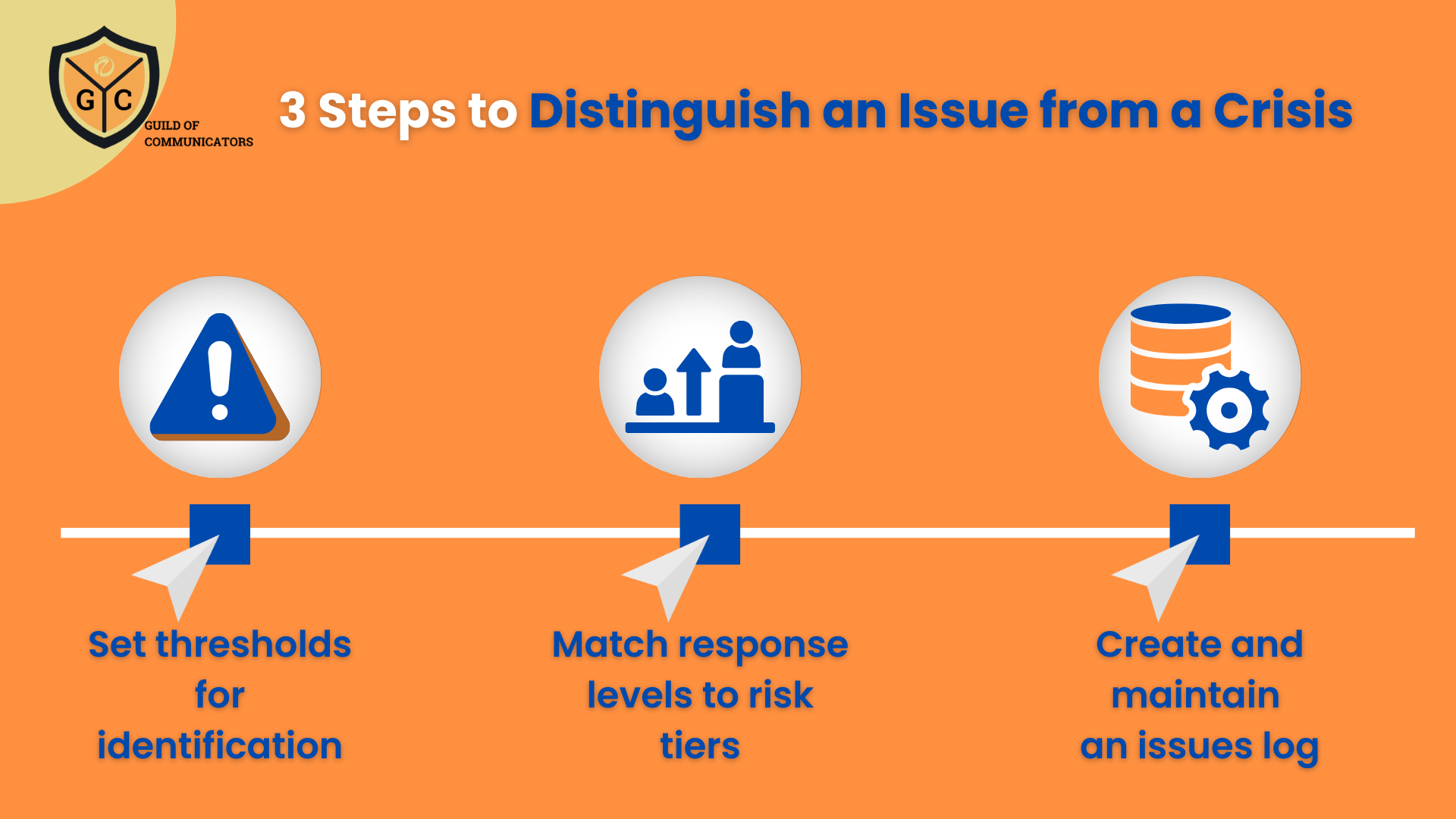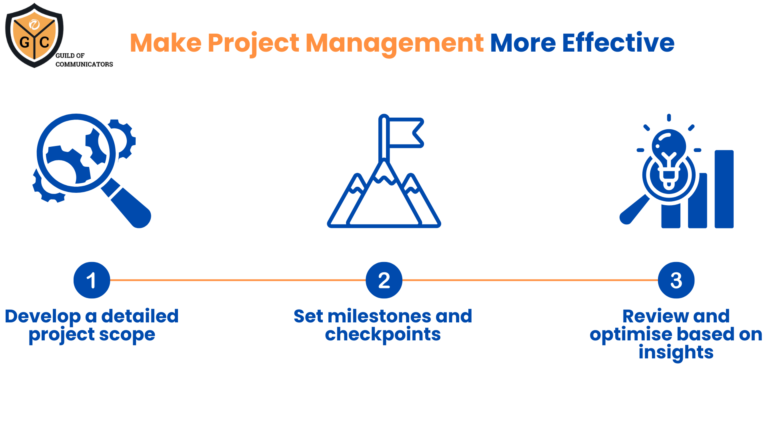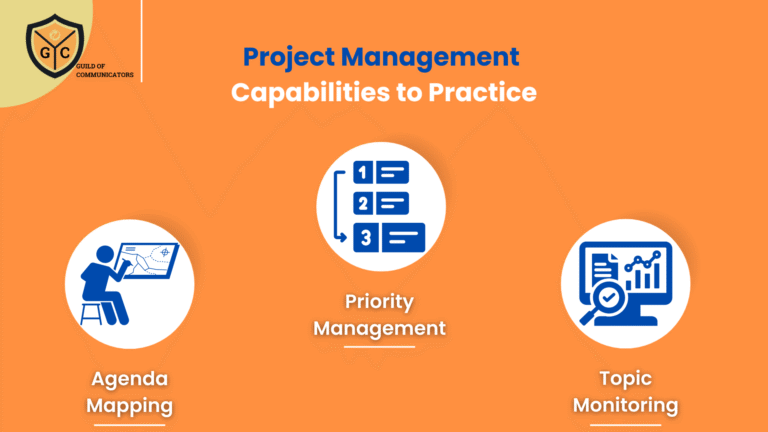In communication, distinguishing between an issue and a crisis is not just a matter of terminology. The distinction determines the resources you use, the level of urgency applied, and the outcomes you achieve.
Misidentifying an issue as a crisis often leads to wasted effort, unnecessary stress, and poor long-term management.
In a previous article, we explored the high-level differences between issues and crises. Issues are emerging challenges or risks that may escalate if left unmanaged. Crises are disruptive, high-stakes events that threaten reputation, operations, or stakeholders immediately. Both require structured responses—but the playbooks are not interchangeable.
Let’s explore deeper into what happens when communicators confuse the two, the consequences of using the wrong playbook, and how to build clarity in managing issues effectively.
Misidentifying Issues as Crises
The first challenge comes from mislabelling an issue as a crisis. For early-career communicators, the difference may feel blurred. A negative online discussion, an operational hiccup, or a complaint from a partner can all appear alarming in the moment. The instinct may be to escalate quickly, but escalation is not always the right step.
When every issue is treated as a crisis, teams risk creating an environment of constant overreaction. This weakens credibility with leadership, who may become desensitised to genuine crises if everything is presented with the same level of urgency. It also conditions the team into reactive behaviours rather than proactive problem-solving.
Clear criteria are essential. A crisis demands immediate, top-level attention because it poses a direct threat to the organisation’s ability to function. An issue demands careful monitoring, structured management, and preventive measures to stop it from growing into a crisis.
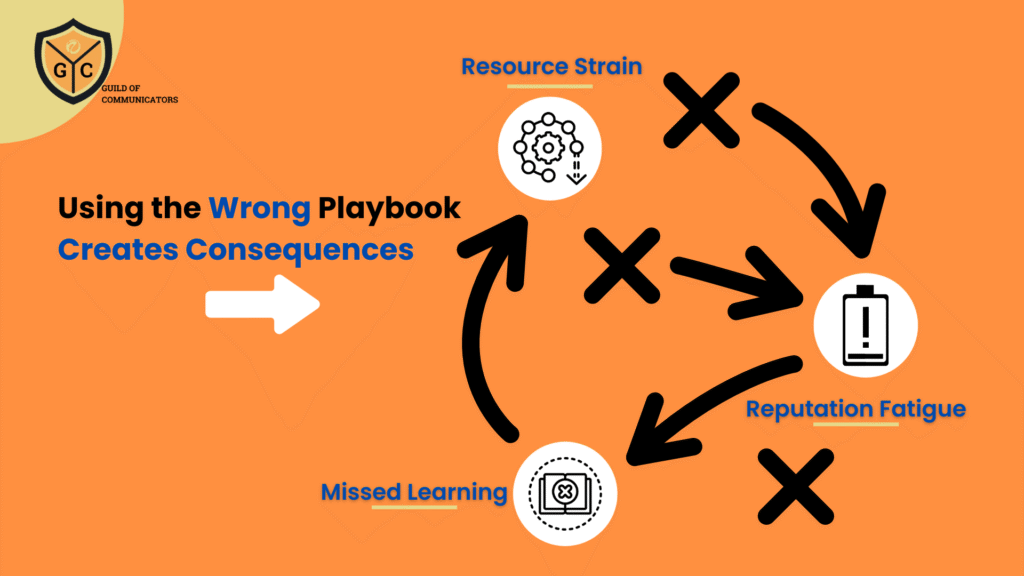
Downstream Consequences of Using the Wrong Playbook
Applying a crisis playbook to an issue creates several negative downstream effects.
- Resource strain: Crises require all-hands mobilisation. When this level of response is applied to issues, resources are wasted on activity rather than impact.
- Reputation fatigue: Stakeholders may perceive the organisation as unstable or overly defensive if every small issue is managed with crisis protocols.
- Missed learning: Issues provide opportunities to improve systems, processes, or messaging. Over-escalating skips this reflective process, preventing organisations from building resilience.
On the other hand, failing to activate the crisis playbook when needed has even more severe consequences. It risks uncontrolled escalation, reputational damage, and loss of trust.
The key skill lies in recognising which category a situation falls into and then applying the right playbook.
Three Principles for Handling Issues
To avoid the mistake of over-escalation, communicators should apply a disciplined framework for issues management. Three core principles can guide this process:
- Proactive Identification: Issues must be detected early through structured monitoring of media, stakeholder conversations, and internal signals.
- Proportional Response: The response should match the level of risk. Escalation is a last resort, not a first instinct.
- Structured Documentation: Every issue should be logged, tracked, and reviewed for patterns. Documentation creates learning loops and informs future decisions.
These principles keep issues management distinct from crisis response. They also give communicators a clear framework to apply consistently, even in ambiguous situations.
Why Issues Take More Resources Than You Think
It may seem counterintuitive, but issues often consume more resources than crises. From a psychological perspective, several factors explain this:
- Ambiguity tolerance: Crises are clear-cut—everyone recognises their urgency. Issues, however, are ambiguous. Teams spend significant time debating whether a situation requires action, delaying resolution.
- Decision fatigue: Issues require multiple small decisions over time—when to escalate, what to say, whether to act. These repeated choices accumulate mental strain.
- Confirmation seeking: Teams often wait for more evidence before labelling something an issue. This search for certainty consumes both time and energy.
- Active management: Issues rarely resolve quickly. They demand ongoing monitoring, analysis, and stakeholder management, which adds up to more hours over the long run.
For communicators, recognising these tendencies is important. It explains why issues management requires discipline, structure, and patience, rather than constant escalation.
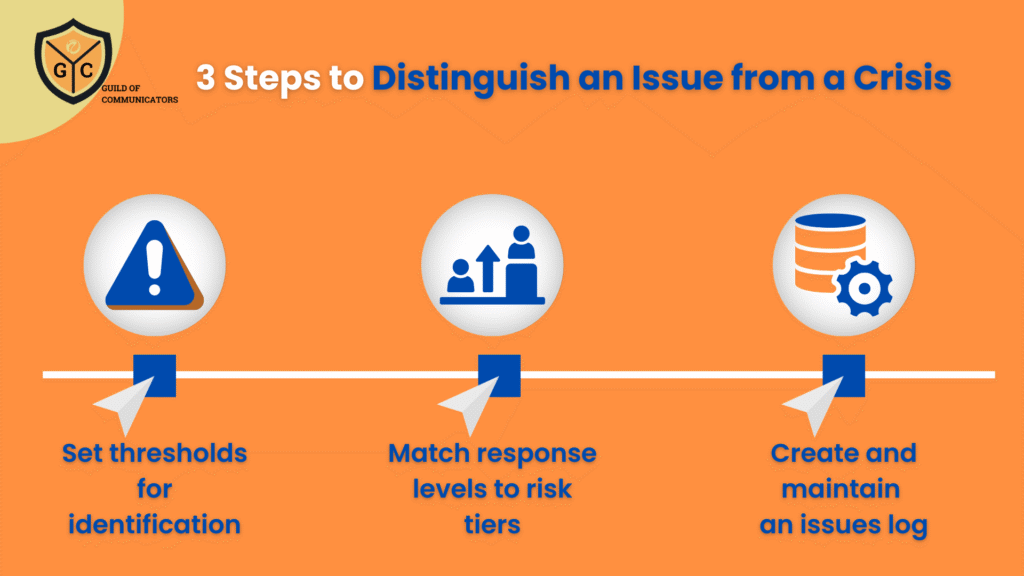
Practical Steps for Applying the Principles
For communicators, the ability to distinguish between an issue and a crisis is a foundational skill. Mismanaging one as the other leads to wasted resources, reputational fatigue, and missed opportunities for learning.
The solution lies in applying a structured issues playbook grounded in proactive identification, proportional responses, and systematic documentation. By doing so, communicators not only protect their organisations from unnecessary escalation but also build credibility as trusted advisors.
Building on the principles outlined earlier, here are three practical steps to put them into action:
- Set thresholds for identification – Define in advance what counts as an issue within your team. For example: a negative media mention, a social media spike in negative sentiment, or repeated customer complaints. Thresholds reduce ambiguity and help early-career communicators act with confidence.
- Match response levels to risk tiers – Develop a simple tiered response system. Low-risk issues may require monitoring only. Medium-risk issues may need prepared messaging or stakeholder engagement. High-risk issues that cross defined thresholds move closer to crisis territory and may be escalated.
- Create and maintain an issues log – Record every identified issue, the actions taken, and the outcomes. Over time, the log becomes a valuable tool for recognising patterns, refining thresholds, and improving future responses. It also demonstrates accountability to leadership.
These steps allow communicators to separate issues from crises with more clarity, and to manage each systematically.
Communicators who master these distinctions position themselves strongly for future leadership roles. The discipline of managing issues well ensures that when a true crisis does occur, the organisation is prepared to respond with focus and impact.
*****
Ready to elevate your communications career? The Guild of Communicators is your essential hub for professional growth, offering a vibrant community and best-in-class resources.
- Connect Membership: Ideal for early-career communicators seeking a supportive peer network, over 300 foundational and intermediate courses, and monthly interactive group sessions.
- Elevate Membership: For ambitious professionals, this tier includes premium frameworks, immersive live online workshops, dedicated career coaching, and mentorship with senior industry leaders.
Discover your path to impact and accelerated career growth.
Join the Guild of Communicators today at www.gocommunicators.com.
(For students: If you’re a student, undergraduate or postgraduate, explore our special student referral programme to lock in your membership fee for the second year! Drop us an email to find out more)
Subscribe to join over 1500+ communicators and brands getting value every Tuesday while reading A Communicator’s Perspective, our weekly newsletter.

